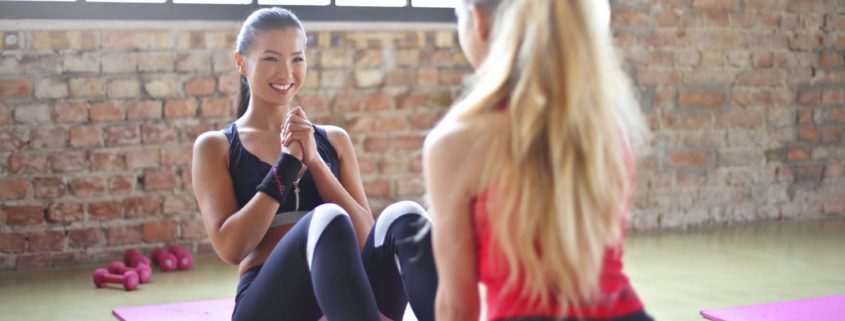It’s no secret that getting physically fit could drastically improve your quality of life. For some individuals, it may even cause underlying health conditions to disappear entirely. But, there’s a handful of other positives that you may not be aware of.
Not sure where to start? Don’t worry, we’ve got you covered.
Let’s take a look at everything you need to know about personal training benefits.
1. Improved Confidence
One of the largest benefits that you experience is a drastic increase in personal confidence. When you begin to transform your physique and become stronger than ever before, it’s highly common for past insecurities to melt away.
This can directly translate into improvements at work, a more fulfilling dating life, and overall happiness in general. For example, someone who’s more confident is far more likely to develop stronger relationships with their boss, coworkers, and clients. This could easily translate into future success.
You’ll also constantly feel prepared for physical activity.
For example, going for a run after work may become a normal part of your day instead of an ordeal that you dread. Other tasks like playing outside with your family or taking your dog for a long walk will no longer become issues.
2. Improved Performance
For those who participate in athletic activity, hiring a personal trainer will cause your performance to skyrocket. This is especially true for those who play sports and are also out of shape, as being overweight or underweight isn’t conducive to peak performance and could also put you at risk of injury.
Even athletes in high school who are seeking to reach peak levels of performance and a sport can benefit from a personal trainer. In many cases, the majority of top athletes have private training sessions in addition to practices with their teams.
This is particularly true during summer vacation, where practice and training both often take a backseat to travel and relaxation.
So, consider this option if you are looking to gain extra strength or speed to help you improve your game.
3. Better Over Health
Failure to maintain a healthy body weight can result in a large number of health complications. The severity of these problems only increases as you stray further from the weight that’s ideal for you.
For example, long-term obesity could result in a heart attack, stroke, or the development of diabetes. In general, though, losing weight (or gaining it in some cases) will help you feel better overall and allow you to get more enjoyment out of life.
A personal trainer will help get you on the right path so that you can reverse your situation as quickly as possible and avoid any negative outcomes.
4. Established Discipline
Interestingly, having a fitness routine that you dedicate yourself to will also make you more disciplined in other areas of your life.
Having a personal trainer will help facilitate this, too, as you’ll have the guidance that you need in order to make consistent progress. Many people who begin to pursue fitness on their own without previous experience often fail to achieve the results they’re after. Over time, this can lead to discouragement and eventually cause them to give up.
When staying active and training have become a staple component of your lifestyle, you’re more likely to fulfill other obligations that you have. This could include going to bed on time, maintaining proper nutrition, etc.
5. You’ll Save Time
If you don’t have a clear-cut path for your fitness journey, it’s highly likely that you spent far more time then you need to in order to develop the strength and physique you desire.
In some cases, it may take you years to accomplish what you could get done in six months with the right programming. A personal trainer knows exactly how you should exercise in order to attain your goals, and they can also accommodate factors such as previous injuries, your body type/metabolism, etc.
Although many people are reluctant to spend money on a personal trainer, they end up spending more time instead. And, the extra time they spend as often worth far more than the cash they put forward for a trainer to help them.
6. Avoid Injuries
Avoiding injuries is a crucial part of a successful fitness journey. It’s not uncommon for someone’s training to be set back for months at a time due to an injury they experienced at the gym.
This is particularly true for those who perform complex movements without fully understanding the mechanics behind them, such as squats, deadlifts, power cleans, etc
Fortunately, one of the main tenants of a personal trainer’s role is to prevent injury at all costs. This means that they will slowly ease you into complex movements so that you can build proper form before you reach weights that could injure you.
In many cases, though, your trainer may avoid these movements entirely if they don’t directly help you achieve your goals. For example, those simply looking to lose weight and not improve their sprinting speed don’t always need to squat or deadlifts.
Understanding These Personal Training Benefits Can Seem Difficult
But it doesn’t have to be.
With the above information about personal training benefits in mind, you’ll be well on your way toward making the decision that’s best for you and your overall health.
Want to learn more about how I can help? Feel free to get in touch with me today to see what I can do.




